USED ONE OF OUR LESSON PLANS?
Fill in our survey for a chance to win a Science North YETI mug! We will draw winners quarterly throughout the school year.
Fill in our survey for a chance to win a Science North YETI mug! We will draw winners quarterly throughout the school year.

Students will learn, using optical illusions and knowledge of human perception, about misinformation and digital literacy. Students will understand how easily our senses can be deceived, drawing a parallel to how information can be misleading online.

Students will learn what acid rain is and how certain ways of generating energy can cause it. In a hands-on activity, students will monitor and assess changes to plants caused by acid rain.

In this lesson, students will code an interactive animation using Scratch that shows how water molecules behave in each of the three states of matter: solid, liquid, and gas.

In this lesson students will be able to use block-based coding to design, code, and build systems for environmental monitoring (specifically temperature) and then can improve upon their system to increase energy efficiency and usage. This can be done online using Tinkercad or physically with Micro:bits. Please see the slideshow for lesson details and instructions in the speaker's notes.
In this guided online lesson, students will learn the steps of scientific research, what scientific integrity is and why it matters from a health information perspective. They will explore the scientific process through an experiment about handwashing and learn how scientists use this process to solve real-world problems. Each learning objective is followed up by an online game or hands-on activity to reinforce the concepts.
* Internet connection required
Students will click through an interactive choose your own adventure story to help them prepare for vaccination day and explore the questions they have about vaccines, like:
● What are vaccines?
● How do vaccines work?
● Why are vaccines important?
● How do I deal with vaccine-related anxiety?
* Internet connection required
** Right-click the SAVE TO DESKTOP button and select "Save As..." in order to download the experience to your device for offline use

Students will create an algorithm, a step-by-step process, to draw or build a structure in the same way that Bees and 3D printers are guided by natural or computer-generated algorithms to create specific structures. This can be done in 2D on paper, or, optionally, expanded to three dimensions using 3D-doolder pens or another building tool.

Students will create a structure (a tower or bridge) using 3D-doodle pens and follow a simplified generative design algorithm to strengthen it until it can support a load.

Students learn about circuits and the difference between conductive materials and insulators in our school program, “Let’s Get Electric”. In this post activity, students will use materials to create a circuit that will cause LEDs to light up in a greeting card. Students will get an understanding of how some greeting cards with sounds and lights are created.
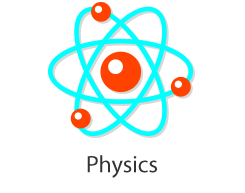
Quickly find the centre of gravity for different objects, even if the weight is unevenly distributed.
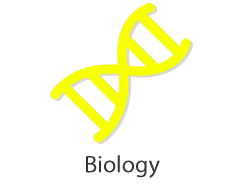
Students will learn how plants, animals and humans are interconnected and interdependent. They will identify the relationships between living and non-living things in the environment and create a food web with Ontario species.

In this lesson, students will be introduced to the idea of computational thinking, specifically through writing with algorithms in specific steps first through the idea of procedural writing, and then extending to review the Circulatory System. This lesson should be planned for after the students have an introduction to the circulatory system.

In this science coding lesson, students will have the opportunity to explore the Ozobot and use it to demonstrate their understanding of the circulatory system of the human body.

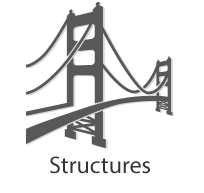
Students build a structure and do experiments to study the forces created internally when the structure experiences an earth quake. They also compare different shock absorbers as ways to reduce the impact of external forces on the structures.


In this lesson students build a shock absorber do experiments to understand how it works and why it is useful. They will start by comparing different materials ability to absorb shocks.

This is the first lesson in a set of five on energy, with a focus on energy storage. Each lesson can be done on its own. In this lesson students will learn about renewable and non-renewable energy sources.

This is the second lesson in a set of five, with a focus on energy storage. In this lesson we take a closer look at energy transformation and how energy can be stored.

This is the third lesson in a unit of five. In this lesson, students will now apply what they have learned so far to build an energy storage device. This will serve to keep building their understanding over the rest of the unit.

This is the fourth out of a five lessons unit. It builds directly on the last one, in which students built an energy storage device. In this lesson they will demonstrate what they built and take a more in depth look at all the devices that were built to understand them better.

This is the fifth of a five lesson unit on energy storage and conservation. By looking at energy storage the students have become aware of loss of energy. In this lesson we will specifically focus on that in the context of our own homes and thermal insulation.


This is lesson one in a five lesson unit on the theme of earthquakes. Earthquakes provide an exciting and interesting entry point to discussing forces and how they act on and in structures and mechanisms. In this lesson we start by having a look at a number of big natural forces and the impact they can have on structures and the environment.


This is lesson two in a five lesson unit about earthquakes in the context of forces on structures and mechanisms. In this lesson we focus on better understanding earthquakes and how we measure their magnitude.


This is lesson three out of a five lesson unit on the forces of earthquakes. In this lesson students get to build an earthquake simulator and then test some structures they build on it.


This is lesson four out of five lessons on the forces of structures in an earthquake. In this lesson students will build on what they learned in lesson three by reinforcing and/or modifying the design of their structures.


This is lesson five in a five lesson unit on the forces of earthquakes. In this last lesson the focus is on consolidating what was learnt in previous lessons by completing the unit project.
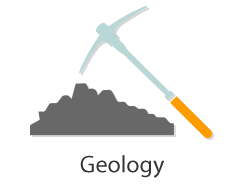
Post Activity
The aim of this post activity is to reinforce the concepts learned in the Rocking’ Detectives school program by using their new skills to make identifications of unknown “rocks”. Students can also see how what they learned is actually useful in the real world and gives them greater knowledge of the world around them.

In this lesson, students will identify which habitat is best for an animal’s physical adaptation.

Post Activity
This is a Post Activity for the What’s the Buzz School Program delivered by the Science en Route Outreach Team. Students use balloons and their hair to generate static electricity, and then transform that electrical energy into light.
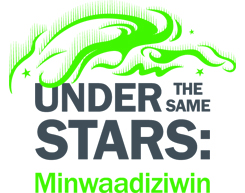
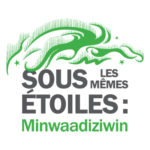
While doing 5 activities, students will explore how their 5 sense create sensory (information) input for their brain which processes the information and gives sensory output or actions for their body.

In this lesson, students will determine how the physical properties of materials make them useful for particular tasks. After considering an example together as a class, students will test materials and determine their effectiveness based on a simulated environmental disaster – an oil spill.

We’ve all seen water at its 3 states of matter: Steam from a boiling kettle; Water in a glass; and Ice cubes. In this activity, students will investigate the freezing, melting, and boiling points of different substances and determine what differences and similarities may exist.